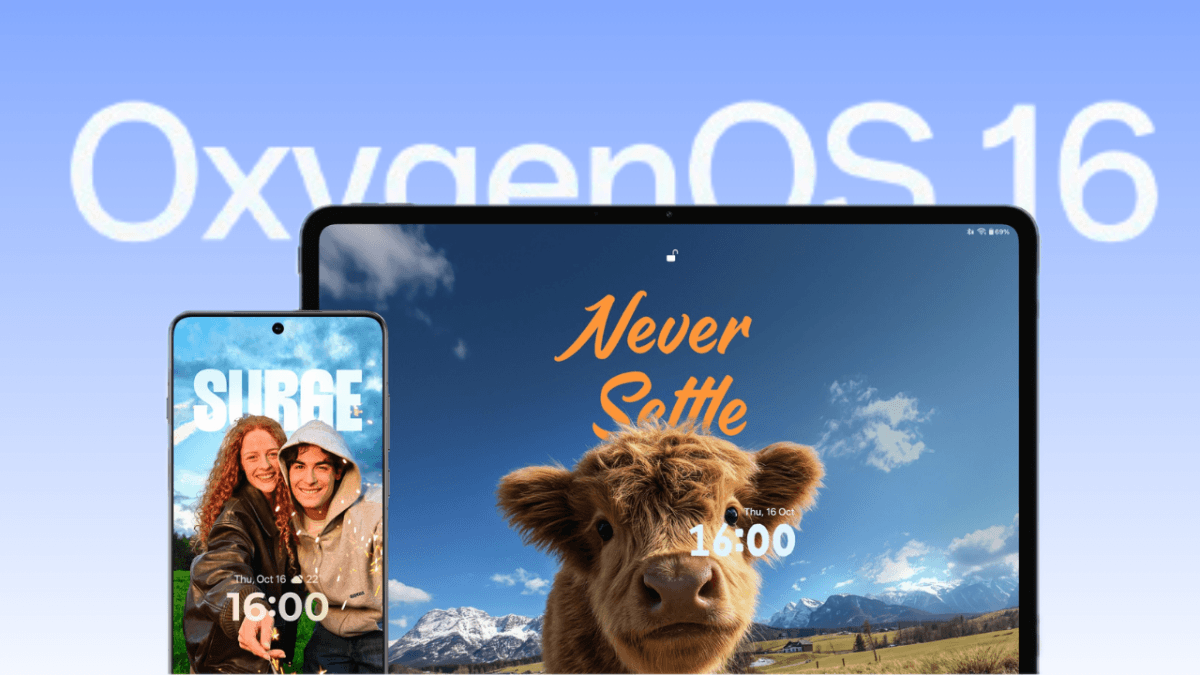
After spending a full week with OxygenOS 16 on the OnePlus Pad 3, it's clear that OnePlus isn't just polishing its skin anymore—it's rebuilding its identity around AI, fluidity, and ecosystem coherence. The tablet experience, which used to feel like an oversized phone UI, now finally feels purpose-built. We take a deep dive into the new OS and draw the biggest takeaways from it.
OxygenOS feels alive
The first thing I noticed was the new visual language, which is all about motion and depth. The Gaussian blur elements, live weather animations, and Flux Theme 2.0 make the UI feel lighter and less static. App icons scale intelligently now, and the revamped dock can hold up to 18 apps, which completely changes how multitasking is done on this tablet.
Fluid Cloud, OxygenOS 16's live activity layer, quietly impressed me. Calendar events, delivery updates, and even commute timers hover on-screen like interactive bubbles—no need to dive into apps. It's OnePlus's take on Dynamic Island, and it's not too bad.
Performance & smoothness
OnePlus Flow Fluid Animation System is the smoothest OxygenOS has ever felt. Period. Animations stretch intelligently with touch input—windows don't just open, they unfold. Paired with the Pad 3's 144Hz display and Snapdragon 8 Elite chip, this UI is nearly impossible to make stutter.
Multitasking is miles better than before. Open Canvas lets me run up to five apps—three split, two floating. Unlike Samsung's rigid grids, Open Canvas lets apps float naturally, so I can move a messaging app over my notes without shrinking both. It's more desktop than tablet.
AI features

OxygenOS 16's biggest vision revolves around OnePlus AI, but here's the catch—Plus Mind, the universal capture-and-think hub, is not yet available on tablets. That's a huge miss.
Still, some AI tools made it through:
- AI Writer helps rewrite a rough paragraph in different tones directly in the Notes app.
- AI Scan auto-crops a handwritten page and converts it into editable text.
- AI Recorder does a lot of things—live transcription, speaker labels, and instant summaries.
But without Plus Mind and Mind Space—the "memory brain" of OxygenOS 16—the tablet feels one step behind the phones.
Battery & stability
Battery consumption on OxygenOS 16 feels slightly higher compared to OxygenOS 15. The new live elements and background AI tasks do cost a few percentage points over a full day of use. That said, standby drain is minimal.
No major bugs, but two app crashes (Chrome and Lightroom) happened while running floating windows—likely early build issues.
Final thoughts
OxygenOS 16 on the OnePlus Pad 3 is a strong, future-facing update that prioritises fluidity, ecosystem depth, and AI-based productivity. But it's incomplete. The absence of Plus Mind on tablets keeps it from being the creative-organisational hub it's meant to be.
That said, after a week, it's clear that this update is not just cosmetic. It feels less like a stretched phone and more like a true productivity canvas.
If this is the direction OnePlus is heading, OxygenOS is no longer just "clean Android." It's becoming something smarter, more intimate—and finally, more ambitious.









